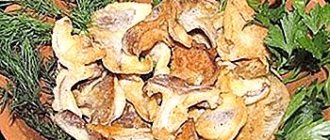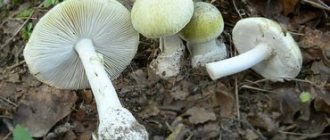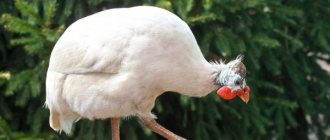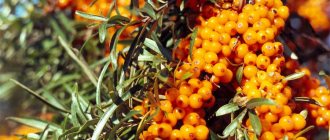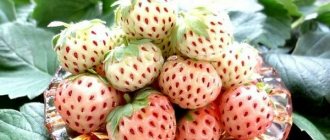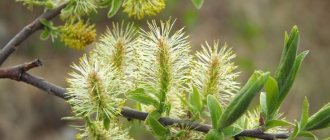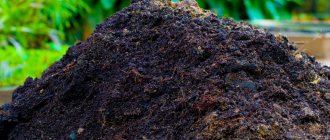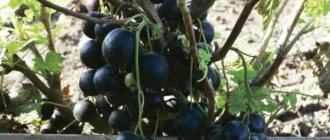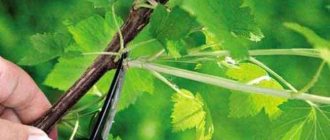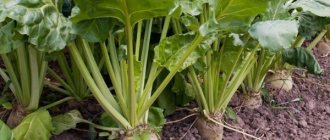Description
The white fly agaric is a typical representative of the fly agaric genus (Amanita). Some sources call the white fly agaric a type of toadstool. By the way, they are approximately the same in toxicity.
hat
Form:
in young mushrooms it is rounded with a conical accent; with age, the edges open up and the cap takes on a semi-prostrate appearance. A depression is observed centrally, and there may be a tuberculate outgrowth. The hat has edges with faint ribbing.- Size: the caps are small (grow up to a maximum of 10 cm in diameter).
- Color: pure white.
- Surface: in the absence of rain it becomes dry and velvety to the touch.
Leg
Form:
a cylinder with a tuberous outgrowth at the base. In adult specimens, the stem contains a solid cavity inside.- Size: the leg of the spring fly agaric is quite long (up to 12 cm) and of medium thickness (about 2.5 cm in diameter).
- Color: Like the cap, the stem is pure white.
- Surface: fibrous, covered with scaly growths. In the upper third, remains of the veil are observed in the form of a relatively long ring-shaped formation. It shows non-sharp longitudinal stripes.
Spore-bearing layer
View:
lamellar.- Color: from white to slightly pinkish.
- Features: the plates are often located, thin.
Pulp
- Density: dense .
- color .
- Features: unpleasant taste, produces an unpleasant odor.
Spore powder
- Spores: ovoid, with a smooth surface.
- Spore powder: white.
Precautionary measures
How to protect yourself and your loved ones from poisoning by poisonous mushrooms?
To do this, you should follow a number of simple rules:
- You should only collect familiar types of mushrooms. Any doubt in identifying a mushroom is a good reason not to add it to the basket.
- You cannot store unknown mushrooms in the same basket as edible ones. If you want to show them to a more experienced mushroom picker later, put them in a separate container. You should not touch such mushrooms with your bare hands.
- It is necessary to cut mushrooms with a whole stem - this helps in identifying them.
- You cannot buy dried, salted, pickled and canned mushrooms from random people and in places of spontaneous trade.
- Under no circumstances should you try mushrooms while picking!
If you follow all these precautions, then you don’t have to worry about becoming a victim of a beautiful, but very dangerous destroying angel. https://www.youtube.com/embed/LHGU7148UkQ
Spreading
Distribution: Grows almost everywhere in temperate climates, but prefers warm regions within a given climate zone.
Fruiting period: spring, which reflects one of its names.
Features: prefers to grow near deciduous trees, in limestone-rich soils.
Application of mushrooms
As it turns out, the correct use of poisonous mushrooms can save a person from many ailments. They are used both externally and internally.
With a strictly calculated dosage, fly agaric is recommended for problems such as:
- skin diseases - diathesis, eczema, neurodermatitis;
- muscle and joint pain;
- headache;
- radiculitis and rheumatism;
- male impotence;
- eye diseases;
- diabetes;
- tuberculosis;
- epileptic seizures;
- oncological lesions.
And this is not a complete list of all the diseases for which this mushroom can help.
The common red fly agaric, which is the most common, can be used in the form of an alcohol tincture, juice, dried raw material, or ointment. All these remedies are used externally for varicose veins, for healing long-lasting wounds, for burns, bruises, and joint inflammation.
The tincture can be prepared with alcohol or vodka. The crushed caps should be kept in the refrigerator for three days, after which they are filled into a jar and poured 1 cm above the mushrooms. Leave the mixture for 15 days in a dark place and filter.
The ointment can be prepared from fresh mushrooms, grinding them into a paste and mixing with sour cream. Or first prepare the powder by drying the fly agaric caps, then grind them and add Vaseline or vegetable oil to them.
Today, special medicines based on poisonous mushrooms have already been released - fly agaric ointment, tincture, medicinal creams, homeopathic preparations.
Similar species
The deadly white fly agaric has similarities to some edible mushrooms:
- Float white
Unlike the fly agaric, it does not have an unpleasant odor or a ring-shaped growth on the stem.
- Umbrella white
It also differs from the fly agaric in the absence of odor, in addition, the umbrella leg is stronger and more fibrous.
1-White float 2-White umbrella
- Volvariella mucocephala
As the name suggests, this mushroom has a slimy surface, unlike the white fly agaric, which has a predominantly dry surface. Volvariella has a grayish cap color rather than white. It does not have a “skirt” on the leg. And finally, it also does not emit unpleasant odors.
- Death cap
In addition to its edible counterparts, the spring fly agaric is similar to this poisonous mushroom. Some sources even note that this fly agaric is a subspecies of the pale grebe. At least they have the same degree of toxicity. Both mushrooms are deadly. There are still differences between the toadstool and the fly agaric: the pale toadstool is not quite white, its color is closer to light yellow-green.
1-Volvariella mucocephala 2-Pale grebe
Where does the white toadstool grow?
White grebes love soil with sufficient moisture, moderate warmth and shade. They prefer coniferous forests with spruce and deciduous forests with alder, oak, and birch. They also grow in mixed forests. These fly agarics like places with a developed moss cover.
Found from early July to late September. In the first half of the season they appear more often in young forests, and closer to autumn - in old ones. They can grow in groups or singly. The stinking fly agaric is widespread in the northern temperate zone.
An interesting article - Svinushka - was previously conditionally edible, but is now classified as poisonous.
Interesting Facts
Spring fly agaric poisoning can occur in the form of 2 symptom complexes:
- Muscarinic
It manifests itself as digestive disorders in the form of nausea, vomiting, diarrhea, salivation and epigastric pain. At the same time, increased sweating appears and the pupils narrow. All this manifests itself half an hour after the fly agaric enters the body. After 6 hours without medical attention, pulmonary edema may develop, a drop in blood pressure and death.
- Atropine
Manifested by fear, anxiety, convulsions, delusions and hallucinations.
Fainting is possible. This effect occurs approximately 2 hours after consuming fly agaric. The severity of the poisoned person’s condition depends on the observed manifestations. So, if there is a digestive disorder, this is a mild degree of damage. Increased sweating, production of large amounts of sputum and drooling indicate a moderate degree of poisoning. And finally, vascular manifestations such as a drop in blood pressure and fainting are a sign of severe intoxication.
It is curious that mental manifestations do not affect the severity of the condition. The only danger of this is that the poisoned person under the influence of delusions and hallucinations can harm himself. Therefore, in such cases, it is recommended to fix the person to the bed or leave him in a safe environment.
The first aid for fly agaric poisoning is repeated gastric lavage. You need to give the person to drink at least a liter of water, then influence the gag reflex. After this, you must call for medical help.
Methods for preparing whitebait
White mushroom is a lamellar mushroom, which means that it is better to eat it salted or pickled. Whitefish are also suitable for freezing. They are good in salads, sauces, soups, pies or as a separate appetizer.
How to pickle white trumpets?
Hot method of salting whitefish
Mushrooms prepared for pickling are thoroughly cleaned of debris and leaves, wormholes and damaged parts are cut out and washed well. Then place it in a glass or enamel container, fill it with cold water and place it on the stove without stirring until it boils completely. When the water boils, carefully mix the mushrooms and remove the foam. Cook the whites from the moment of boiling for 15-20 minutes. After that, they are thrown into a colander, allowed to drain completely, then placed in dense layers of 5-7 centimeters in a wide dish and sprinkled with coarse table salt on each layer, at the rate of 30 grams of salt per kilogram of whitefish. Pepper, currant, cherry and bay leaves are placed at the bottom of the dish and on top of the mushrooms. You can add cloves or garlic. Oppression is placed on top.
Cold method of salting whitefish
When using the cold salting method, the whites must be soaked for two to three days to remove the bitterness. To do this, they are cleaned, washed and filled with plenty of water. It is necessary to change the water at least two to three times a day. Soak the whites until the bitterness disappears completely. Then the mushrooms must be placed with their caps up in a wide dish, in layers of 5-7 centimeters. Each layer of white mushrooms is sprinkled with coarse table salt - 30 grams of salt per kilogram of mushrooms. Lay the waves as tightly as possible. Spices are placed on the bottom and on top of the mushrooms. Oppression is placed on top of the whites. White trumpets prepared in this way will be ready for consumption in about 3–4 days.
Pickled white trumpets
To prepare pickled white mushrooms, take peeled and washed mushrooms and soak them in cold water for three days, changing the water two to three times a day. Be sure to ensure that the whites do not sour. It is advisable to sort the mushrooms by size. The soaked mushrooms are thoroughly washed and boiled in salted water for 20 minutes, after which they are thrown into a colander and allowed to drain. The marinade is prepared in the following proportions: 150 ml of water, a teaspoon of table salt, a teaspoon of sugar, peppercorns, cloves and bay leaves. Bring the marinade to a boil over medium heat, put the whites in it, pour in half a tablespoon of vinegar and cook for another 10 minutes. Hot whites are placed in sterile jars, sealed and hermetically sealed with lids, also sterilized. The jars are turned upside down, covered with a towel and left to cool completely. Store pickled whites in a cool, dark place.

